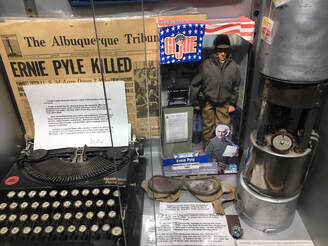 I sat in on a ZOOM meeting last Thursday night. The meeting was the first of a monthly series hosted by my publisher and features authors of books published by them. My turn is coming in December. The featured author for the night was a lady whose education includes a PhD in Symbolic Learning. She talked for an hour about her latest book, and took questions from the other members. I confess that hearing the title of Symbolic Learning had me visualizing Robert Langdon, the Harvard professor in the series of books written by Dan Brown, played wonderfully by Tom Hanks. However, he is a professor of Symbology, not Symbolic Learning, and I don’t even know if that’s a real department at Harvard or whether Dan Brown is just pulling my leg. Getting past imagining this lady as a puzzle solver traipsing around Europe chasing remarkable criminal masterminds, I admitted that I didn’t know what “symbolic learning” meant. Thankfully, skirting a formal definition, she described herself as a professional storyteller, and it is the symbols (people, creatures, landscapes, structures, and more) contained in stories that describe or teach the aspects of culture. More personally, it is how an individual relates to those symbols that reflects their beliefs in life. That’s my off-the-cuff definition, but not getting bogged down in the details, I can see how someone can reveal their values, for example, by the stories they tell. The lady, who was very nice, literate, and open, sees stories - be they fairytales, memories, historical renderings of events, fictional portrayals of people, or family hand-me-downs - as the vehicles for showing who we are, what we’ve learned, how we change, how we relate to each other, or why we value what we value. From individuals to societies to cultures. Her day job is hosting workshops that help participants cope with life by teaching themselves to express their feelings and experiences through storytelling. I stink as a storyteller, so I think of myself more as a storywriter. It’s a fact that I have trouble telling stories because I can’t remember anything longer than a minute, tend to wander away from the script, and invariably change the story as I tell it. Those characteristics are probably hooked to my personality being somewhat obsessive-compulsive, with not a little of perfectionist tendencies. I think more of my being a poor storyteller as just an internal sense of direction connected to a haywire compass: I can’t see, walk, or talk in a straight line from one point to another. It’s frustrating for some but it makes my days more interesting. So, I don’t tell stories and I’m happy with that; using my voice is not my talent. But I do claim to be a storywriter. I’m comfortable with presenting stories to readers if I can create a story and then revise it umpteen times until I think it’s a reasonably finished product that has a beginning, an end, and a middle. I won’t belabor the point because I’ve written about my need for rewriting in other blogs, but I do want to talk about the “learning” part of the author’s degree, because, as I listened to her, I recognized that stories are, perhaps, the way we present difficult, complex, and gray-area concepts and values so that the concepts and values are greatly simplified, understandable, observable, and teachable. Which is probably why Jesus used parables rather than sermons. My three-year-old granddaughter cannot read, but it doesn’t prevent her from taking one of her picture books, gathering an audience of stuffed kangaroos, pandas, bears, monkeys, and other toy animals into a corner of the room, and “reading” a book to them. She never misses a page, will talk and point to the different parts of each page, and will perform her best imitation of adult voices, intonations, laughs, facial expressions, and string of emphatic gestures. It’s rather remarkable, but there is no doubt that telling her the stories has taught her the stories, and what the adults emphasized is now what she emphasizes. She has learned not only the story but what’s important about the story. Storytelling and storywriting are like holding up mirrors to people so they make the connection between the story and themselves: what is happening in the story is relevant to what is happening to them. My characters are easier to create, imagine, and fulfill if they look like my readers, and consequently look like me. I can pick a certain trait out of my experience and create an evil person, a good person, a flawed person, a changing person, a fool, an expert, a lover, a hater, and so on. It sometimes takes a lot of imagination to translate the traits into fiction without using stereotypes but the authenticity still comes through. My readers can identify with my characters’ personality traits because I use common human traits seen every day. I have to work harder on traits that are extreme, but, even then, I never create characters whose descriptions can’t be found in daily newspapers or tabloid exposes. I also make characters change in ways that they perhaps should have, did or didn’t, but still work to make them commonplace. If I do this consistently enough, and obvious enough, then those characters start to stand for something independent of the plot. They, in fact, become “symbols” that reflect the traits of the readers. That enhances the connection between the story and the reader, and makes the stories more meaningful, relevant, and interesting.
0 Comments
Leave a Reply. |
AuthorDon Willerton has been a reader all his life and yearns to write words like the authors he has read. He's working hard at it and invites others to share their experiences. |

 RSS Feed
RSS Feed